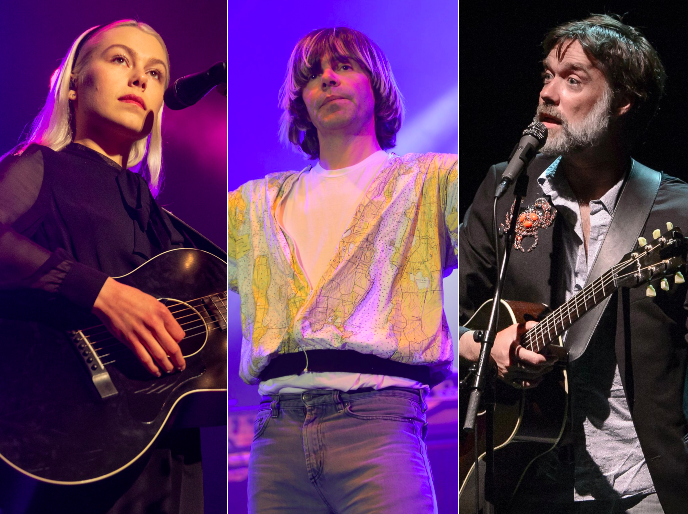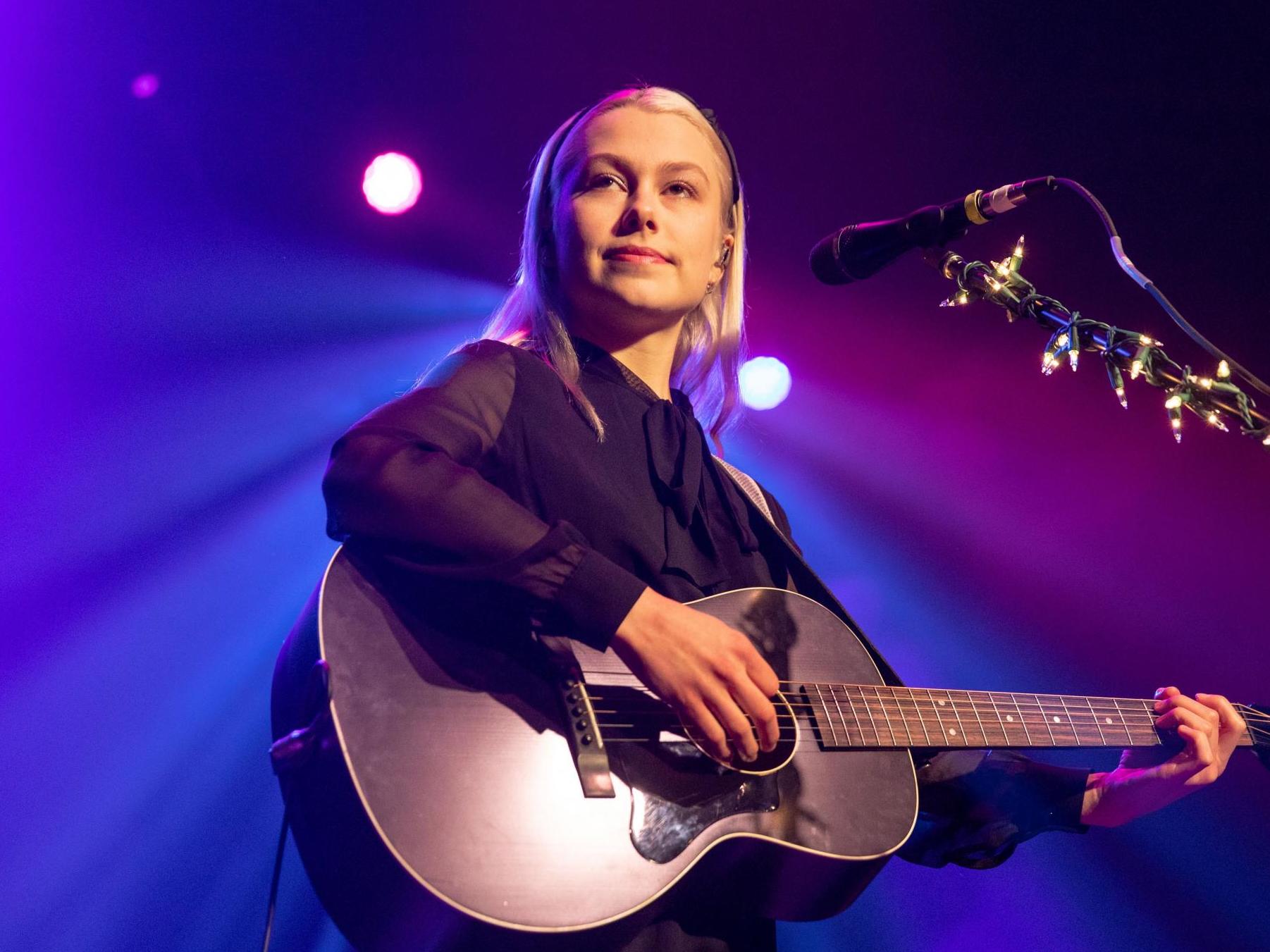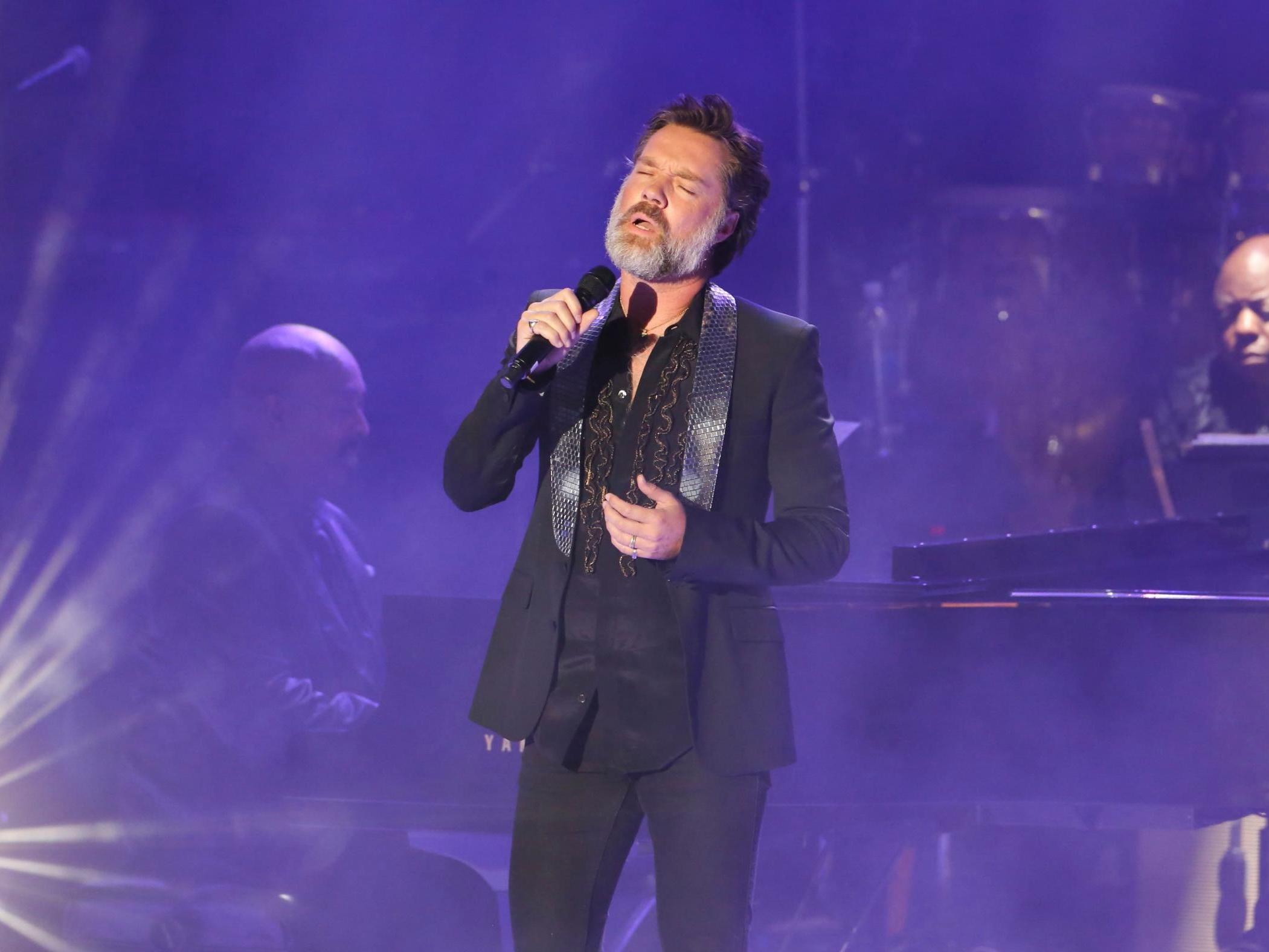‘My neighbours think I’m losing it’: From livestreams to virtual reality raves, how musicians are coping without touring
Cancelled gigs and tours have hit musicians hard but the likes of Phoebe Bridgers, Rufus Wainwright and Tim Burgess have filled the void by getting creative online. There’s still hope, they tell Alexandra Pollard


Your support helps us to tell the story
From reproductive rights to climate change to Big Tech, The Independent is on the ground when the story is developing. Whether it's investigating the financials of Elon Musk's pro-Trump PAC or producing our latest documentary, 'The A Word', which shines a light on the American women fighting for reproductive rights, we know how important it is to parse out the facts from the messaging.
At such a critical moment in US history, we need reporters on the ground. Your donation allows us to keep sending journalists to speak to both sides of the story.
The Independent is trusted by Americans across the entire political spectrum. And unlike many other quality news outlets, we choose not to lock Americans out of our reporting and analysis with paywalls. We believe quality journalism should be available to everyone, paid for by those who can afford it.
Your support makes all the difference.I’ve never done this before, so if I’m a bit nervous, I apologise,” says Coldplay’s Chris Martin, sitting by a piano scratching his head. “‘Amazing Day’?” he says, peering at the thousands of live comments cascading down his screen. “I can’t remember that one.” It’s 16 March, the world is teetering on the brink of lockdown, and the Coldplay frontman is about to plunge into the unchartered waters of online concerts. Soon, the rest of the music world will follow.
In the early days of the pandemic, cancelled tours and festivals were breaking news. “The Who arena shows postponed due to coronavirus”; “Taylor Swift cancels 2020 Lover tour dates due to coronavirus”; “Glastonbury 2020 cancelled due to coronavirus”. And then, as the global crisis escalated, the tidal wave of postponements became too much to keep up with. Publications like ours stopped running them as news stories. Eventually, every single tour and every single festival had ground to a halt. And with them, a huge chunk of artists’ livelihoods.
“Sad. Very, very sad.” That’s how Phoebe Bridgers felt when she realised her summer gigs wouldn’t be going ahead. “I get 80 per cent of my self worth from interacting with tons of people on tour every night,” she tells me. Rufus Wainwright agrees. “I miss the travel and just being in my fans’ world,” he says. American indie-rocker Lucy Dacus was planning on “taking it easy” this year, “which still meant doing, like, five tours,” she says. But none of them are happening. “It’s very affirming and powerful to stand in a room with friends and strangers,” she continues, “and look in the same direction, share in an experience, find joy. I miss being an excuse for people to come together.”
“It’s definitely not a great time to be in a profession that relies on international travel and large groups of people gathering together to sweat and shout over each other,” adds Michael Lovett, who performs as synthpop solo outfit NZCA Lines, somewhat remorsefully.
Of course, it isn’t just the emotional fulfilment of touring that artists are missing out on. The financial future of the music industry is potentially an arid one. Since the birth of streaming, live performances have become the most common income source for musicians. The live music sector is expected to lose £900m this year – 81 per cent of its annual contribution to the UK economy, according to figures reported in The Guardian – and touring musicians could lose up to two-thirds of their live income from cancelled festivals alone. The Musicians’ Union say their members have lost more than £21m in income since the start of lockdown.
Even as restrictions begin to ease up, it’s unclear when live music will be able to make a comeback. But given that US bioethicist Dr Zeke Emanuel told The New York Times that “realistically, we’re talking fall 2021 at the earliest,” it seems unlikely that we’ll be cramming ourselves into sticky-floored venues (if, indeed there are many left after all this) or shuffling along the aisles to nosebleed arena seats, any time soon.
Still, artists are nothing if not creative. They’re finding resourceful ways to satiate their fans’ appetite for live music. Following in Chris Martin’s footsteps (his live stream has been watched by over 2 million people), Lady Gaga curated the Together at Home concert, a six-hour marathon in which artists such as Billie Eilish, Kacey Musgraves, Taylor Swift and The Rolling Stones performed from the confines of their homes to raise money for the World Health Organisation. Christine and the Queens, AKA Heloise Letissier, performed on The Late Show from her windowsill in Paris, and posted nightly Instagram lives of stripped-back performances, dancing and writhing around the massive, wooden studio she had found herself quarantined in. Wainwright has been doing “bathrobe recitals” in his dressing gown every day. Folk singer Grace Petrie and her musician housemate Ben Moss posted a galvanizing A-Z of covers, starting with Sugababes’ “About You Now” and ending with “Zombie” by The Cranberries, before re-playing all 26 songs live “while getting pissed” and raising £11,000 for The Big Issue. And there are countless other examples of musicians getting inventive with streaming.
Phoebe Bridgers has been doing at-home gigs since April. “The cool thing about them,” she says, “is you can connect with people so easily. I don’t have to take off my pyjamas or carry a bunch of stuff to a venue.” Then again, she adds, “it can feel like I’m just singing to myself,” so she set up a sample pad of applause to trigger between songs. “It helps a little. I’m sure my neighbours think I’m losing it.” For her at-home gig for the music website Pitchfork, she asked for the proceeds to go to the Bail Project – because “the police combined with the privatised prison system in America is an extension of slavery. Any way we can disrupt that and free people is important to me.”

When Lovett realised he wouldn’t be able to tour his forthcoming album Pure Luxury, he considered delaying the release altogether. Instead, he decided to throw a virtual release party and “perhaps offer a little escape”. “Whilst the inability to play live shows is obviously a real bummer,” he says, “it’s taken me online in a way I’ve never been before. I like the experience of live streaming. It’s weirdly intimate – you start building relationships with the fans who become regulars. It’s forced me into learning and playing more music – both my own and covers – than I’ve ever done before.” His album release party is “going to be a combination of a real livestream ‘show’ with production value (ie no home furnishings, decent audio) and something that approximates the social aspect of a real gig.”
Other musicians have taken different routes. Electronic duo Prospa decided to throw a virtual warehouse rave for over 600 people. 3D artist Petter Schölander created a specially designed VR warehouse for the video stream, streamed live in full 360 to YouTube. The virtual warehouse space played host to an hour-long set from Prospa, their first since current circumstances cut their debut Leeds residency at Headrow House short. The idea, say Prospa, “came out of the frustration of us being away from each other and wanting to do a live stream. The idea was to give back to all the people who were stuck at home wanting to rave and just have some fun.” Schölander created the virtual warehouse using software called Cinema 4D. "I added details in the hangar such as a demolished floor and roof," he says, "aeroplanes that look like they're from a scrapyard (both close and far away from the camera to emphasise the sense of space) and of course the stage screens scattered around to bring the light show together. Rendering different loops of the light show, I then took and edited everything together and exported the final product from there.”
Though she’s spent plenty of time watching her musician friends play live streams, Dacus is yet to do so herself. “I feel far less connected to my fans, but that’s probably my fault for not showing up online more,” she says, though she’ll remedy that on 17 June by taking part in Royal Albert Home, a run of shows put on by the famous London concert hall. The gigs are free, but the Royal Albert Hall, which like every other venue is currently closed, is asking viewers to consider donating.
Dacus has a “magical memory” of going to the Proms at the venue in 2016 where “people were wearing gloves and hats” and, having nabbed cheap tickets up in the gods, she “listened to the symphony with my face pressed between the iron bars of the guard rail.” She says she was “honoured when RAH asked me to do a stream, although it will unfortunately lack all the pomp and charm that the Hall offers.”
Another musician who is taking part in the Royal Albert Home series is Charlatans frontman Tim Burgess. He’s been throwing wildly popular “listening parties” on Twitter since March, during which people around the world listen to the same album at the same time (Roisin Murphy’s has been his favourite so far). He’s been working with his partner and his seven-year-old on his live sets, and sees one distinct advantage to virtual performances over IRL ones. “At real gigs, there’s always someone looking to ‘borrow’ a phone charger and I have to keep a close eye on my snacks,” he quips.

Lovett is looking on the bright side, too. “From a musician’s perspective, there’s actually a lot of technical aspects that are preferable to a real gig,” he says. “You know exactly how it’s going to look and sound, and there’s less variables than a real gig – ie, no backline sharing, grumpy sound guys, weird room acoustics. On the downside, there’s a high likelihood people will be listening through a phone or laptop speaker. From an audience perspective, that’s not too satisfying – but hey! No toilet queues, no overpriced beer, you’re definitely not missing the train home... what’s not to love?”
He’s also felt more connected with his fans than he ever has done before. “The fact that we’ve been getting almost all of our social interactions online has changed the way I think about using social media,” he says. I’ve had some really nice moments, after playing a song on Instagram Live, just chatting to people and answering questions – sometimes for over half an hour. Often, it’s the ones I’ve been dreading most that end up being the most fun.”
As for the financial repercussions of a live music industry on hold, while they are no doubt severe, there is hope to be found. Not only are many people choosing to donate to venues that are struggling, but music fans have opted out of refunds for cancelled or postponed gigs. “In the first month of or so of lockdown I did think that a large majority of gig-goers would want refunds,” says Trevor Williams, the tour director of Tour Music Live, who’s worked with artists such as Stormzy and Grace Jones. “But when receiving ticket counts and updates, I was very surprised to see that the refunds across the tours we had were minimal.”

And yet the yearning for the return of tours, among both music fans and musicians, is strong. Last week, as lockdown began to loosen, Laura Marling left her house, took to the actual stage of Union Chapel, and played a gig. True, there was nobody in the audience, but it was the closest many music fans, myself included, have come to a real live show in many months and it was invigorating.
Perhaps that’s the next step. “As far as the next six months, I think if there was a way to outsmart this thing, a giant company would have thought of it by now,” says Bridgers. No one’s outsmarted it, exactly, but companies have certainly been savvy. In April, the computer game Fortnite hosted a live, in-game Travis Scott concert, during which the US rapper performed on a virtual stage built into the game world. 12.3 million concurrent players congregated online to watch the concert – the game’s largest ever in-game gathering.
One thing’s for sure, though – this can’t go on forever. “Worst case scenario would be for this virus not to be cured and venues not being able to open back up,” says Williams, “as that would most definitely kill our touring industry.” The bands he’s working with are optimistic that they will be able to tour again in the near future, but they are also “worried about not jumping the gun too soon, as they also feel the responsibility for the safety of their fans and touring crew. They are all most definitely missing interacting and putting on a show for their fans as the virtual and online performances, which are creative certainly, are not the same.”
Lovett agrees. “Nothing can replace the experience of performing or watching a live show,” he says. “I think we have to admit that – it’s a communal experience in which the energy of an audience inspires the performers, and vice versa. It’s a feedback loop. As a musician, no matter how normal you feel before a show, you are transformed when you get onstage.”
Wainwright is sanguine. “It will return in phases,” he says. “For now, we can only wait.”
Join our commenting forum
Join thought-provoking conversations, follow other Independent readers and see their replies
Comments